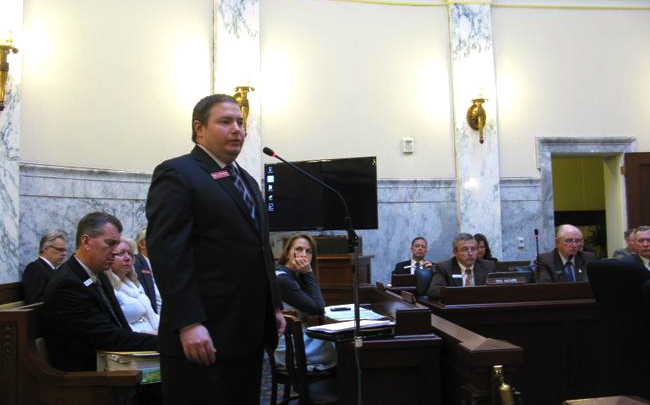Budget-writers finally heard some reassuring news about high school broadband Friday: Districts should make the short-term transition off the defunct Idaho Education Network with minimal disruption.

The rosy assessment came from Will Goodman, state superintendent Sherri Ybarra’s chief technology officer. Goodman and his staff have been scrambling to help districts replace the now-defunct Idaho Education Network broadband system.
The State Department of Education has been working with 133 school districts, charter schools and juvenile corrections facilities that were eligible to use the network. Only one — the Mountain View district in north-central Idaho — has no backup plan in place. Eleven districts have asked for extra help in making the broadband transition, but Goodman expects these districts to be back online by the end of next week.
Districts and the state face a deadline today. Education Networks of America, the lead contractor on the statewide network, has threatened to cut off any schools that do not sign short-term contracts to cover the rest of the school year. That means districts have had only a matter of days to decide whether to re-sign with ENA, or switch to another vendor.
There are still many unanswered questions about the transition. It’s not yet clear how many districts will stay with ENA or go elsewhere. The costs are another big unknown. As Idaho Education News reported Thursday, some districts have switched vendors — and found big savings from the previous contract. Other districts are looking at a steep price increase, whether they have stayed with ENA or switched vendors.
“We’re seeing the whole gamut,” Goodman said after his presentation to the Joint Finance-Appropriations Committee.
More answers and details will come on March 9, when districts need to file their contract paperwork with the state.
Either way, he said, the state plans to keep districts whole. As long as their short-term contracts pay for comparable broadband service, the state will reimburse districts’ costs.

The Legislature quickly passed a $3.6 million bailout bill — designed to cover districts’ costs for short-term broadband contracts. Gov. Butch Otter signed the bill Wednesday, and the Education Department received the money Thursday night.
And for school districts, some cash will be on its way Monday. The Education Department will send each district $2,000 to help cover any equipment purchases they need to make immediately.
The fast action impressed Rep. Maxine Bell, co-chair of JFAC.
“I think we set a new record,” said Bell, R-Jerome. “I’d say we’re right on.”
Sen. Dan Schmidt, a Moscow Democrat and outspoken critic of the network contract fiasco, also had praise for Goodman. “This is a pretty impressive scramble that has had to happen.”
A price hike for districts
Still, JFAC did hear some sobering news Friday morning — and it stems back to the Idaho Education Network contract, thrown out in a Boise district court.
Some school districts piggybacked onto the broadband contract to purchase other equipment, such as wide area network technology. The districts paid for these add-on purchases out of their own pocket — but they hitched onto the network contract to take advantage of a generous match in federal funding.

But the broadband network lost its match in 2013, when the feds suspended “e-Rate” payments from telephone bill surcharges. That means the districts also lost their e-Rate match, which also covered three-fourths of local purchase costs. For example, the Pocatello-Chubbuck School District has seen its costs for WAN quadruple from $25,000 to $100,000.
Sen. Jim Guthrie, R-McCammon, suggested districts such as Pocatello have sustained “collateral damage” in the network court battle.
Five other districts have also reported similar spikes in costs, Goodman said, “but we’re hearing of others.”
